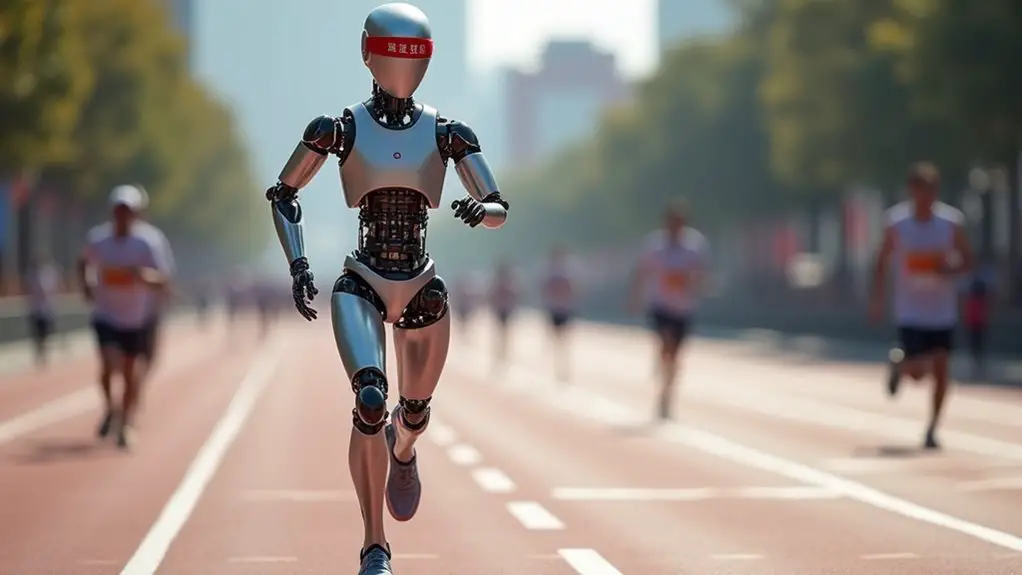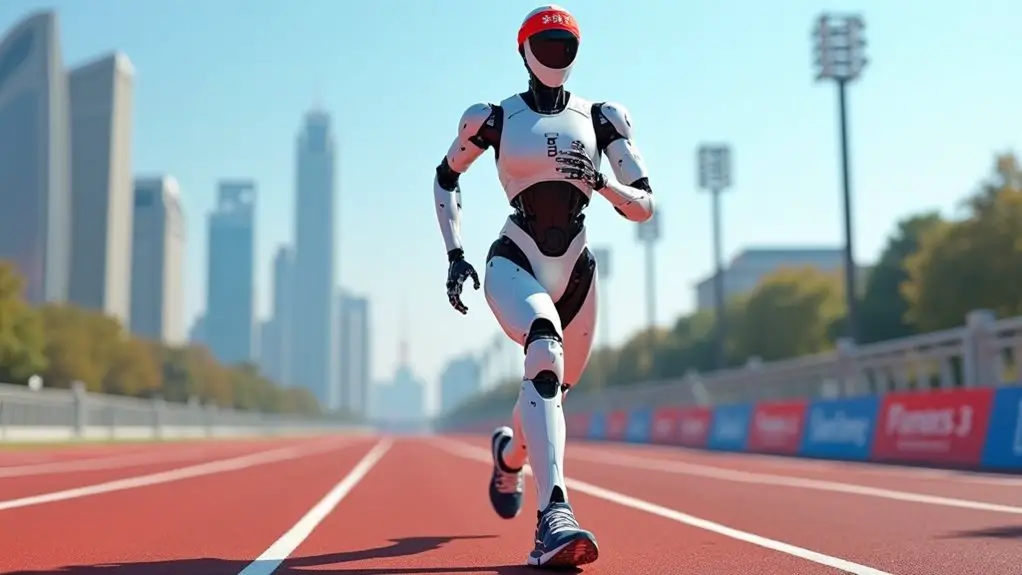In April 2025, China hosted its first human-robot half-marathon in Beijing, where 21 humanoid robots competed alongside humans over a 21km course. The fastest robot, Tiangong Ultra, finished in 2 hours and 40 minutes, while the human winner completed the race in just 1 hour and 2 minutes. Robots faced challenges including falls and collisions, requiring human assistance. This groundbreaking event tested biomimetic movement, battery endurance, and established new benchmarks for robotics technology development.

Twenty-one humanoid robots made history last week as they competed alongside thousands of human runners in China’s first-ever human-robot half-marathon. The groundbreaking event took place in Yizhuang, Beijing, on April 19, 2025, featuring a challenging 21km course that tested the limits of artificial intelligence and robotics.
You might wonder about the rules that governed this unique competition. All robots were prohibited from using wheels and had to mimic human locomotion throughout the race. The machines ranged in height from 3 feet 9 inches to 5 feet 9 inches, with each designed to optimize biomimetic movement patterns.
Tiangong Ultra emerged as the fastest robot, completing the half-marathon in 2 hours and 40 minutes. This performance, while impressive for a machine, still lagged considerably behind the human winner who finished in just 1 hour and 2 minutes.
The race wasn’t without challenges for the mechanical competitors. One robot stumbled at the starting line but managed to recover with operator assistance. Another collision incident involved a railing and caused an operator to tumble, highlighting the importance of human support throughout the event. The competition marked a first-time event where humans and humanoid robots raced against each other in this format.
Each robot was permitted three battery replacements during the race. You could see teams of human trainers providing stability during unstable movements and offering physical support when needed. One robot was particularly eye-catching with its red headband inscription that boldly displayed “Bound to Win” in Chinese characters. The varied footwear used by the robots included running shoes and even boxing gloves for improved grip.
The Beijing Innovation Center, which led the Tiangong Ultra team, expressed confidence that their technology surpassed Western competitors. “Our algorithms maximize energy efficiency and optimize stride patterns in ways no other teams have achieved,” a representative stated.
This unique competition served as a real-world stress test for robotics technology. You’re witnessing the validation of biomimicry in humanoid design and the establishment of new endurance benchmarks for battery and motor systems.
The event successfully engaged public interest through its novel format while exposing technical limitations that will guide future research and development in humanoid robotics.
Frequently Asked Questions
How Do Running Robots Handle Terrain Variations and Obstacles?
You’ll find that running robots handle terrain variations through several advanced techniques. They actively reconfigure their morphology, changing shape to match the surface beneath them.
These robots modify their gait in real-time when encountering slopes or loose surfaces, adjusting parameters to maintain stability. Multiple sensors detect ground conditions, enabling quick recalibration when obstacles appear.
Many robots use imitation learning from animals like dogs, combining natural locomotion styles with terrain-aware adaptations for efficient movement across challenging environments.
What Emergency Protocols Exist if a Robot Malfunctions During a Race?
If a robot malfunctions during a race, you’ll find multiple emergency protocols in place.
Emergency stop buttons allow race officials to instantly halt the robot when triggered. These physical controls are positioned throughout the course for quick intervention.
Software failsafes automatically detect abnormal behaviors and shut down operations.
Race teams rehearse “what-if” scenarios and follow prepared diagnostic procedures to identify issues.
They can manually override systems, power cycle the robot, or remove it from the course if necessary.
Do Robots Require Human Operators Nearby During the Race?
Yes, you’ll find that robots in these races require human operators nearby for assistance.
Based on the background information, many robots needed humans for navigation and stability throughout the course. Some were remotely controlled by operators running beside them, while others used signaling devices to follow humans ahead.
The winning robot, Tiangong Ultra, specifically followed a human using a signaling device. Teams of navigators, operators, and engineers proved essential for successful robot performance.
How Are Robot Racing Outcomes Affecting Sports Betting Regulations?
Robot racing is prompting significant changes in sports betting regulations.
You’ll find regulatory bodies implementing new criteria to identify automated wagering systems, similar to those used in horse racing. These regulations aim to maintain fair play and protect market integrity.
Gaming authorities are updating their frameworks to address technological advancements in betting, focusing on consumer protection and preventing market erosion.
The rise of algorithmic betting has pushed regulators to collaborate across jurisdictions to enforce consistent standards.
Can Humans Psychologically Adapt to Competing Alongside Machines?
You can adapt psychologically to competing alongside machines through your cognitive flexibility and emotional resilience.
Research shows you’re naturally equipped to adjust strategies in dynamic environments where AI operates.
When competing with AI, you might experience reduced motivation after losses, as humans often attribute defeats to the machine’s superior abilities rather than chance.
For ideal adaptation, focus on developing complementary skills that leverage your creative problem-solving and intuitive decision-making capabilities that machines still lack.





